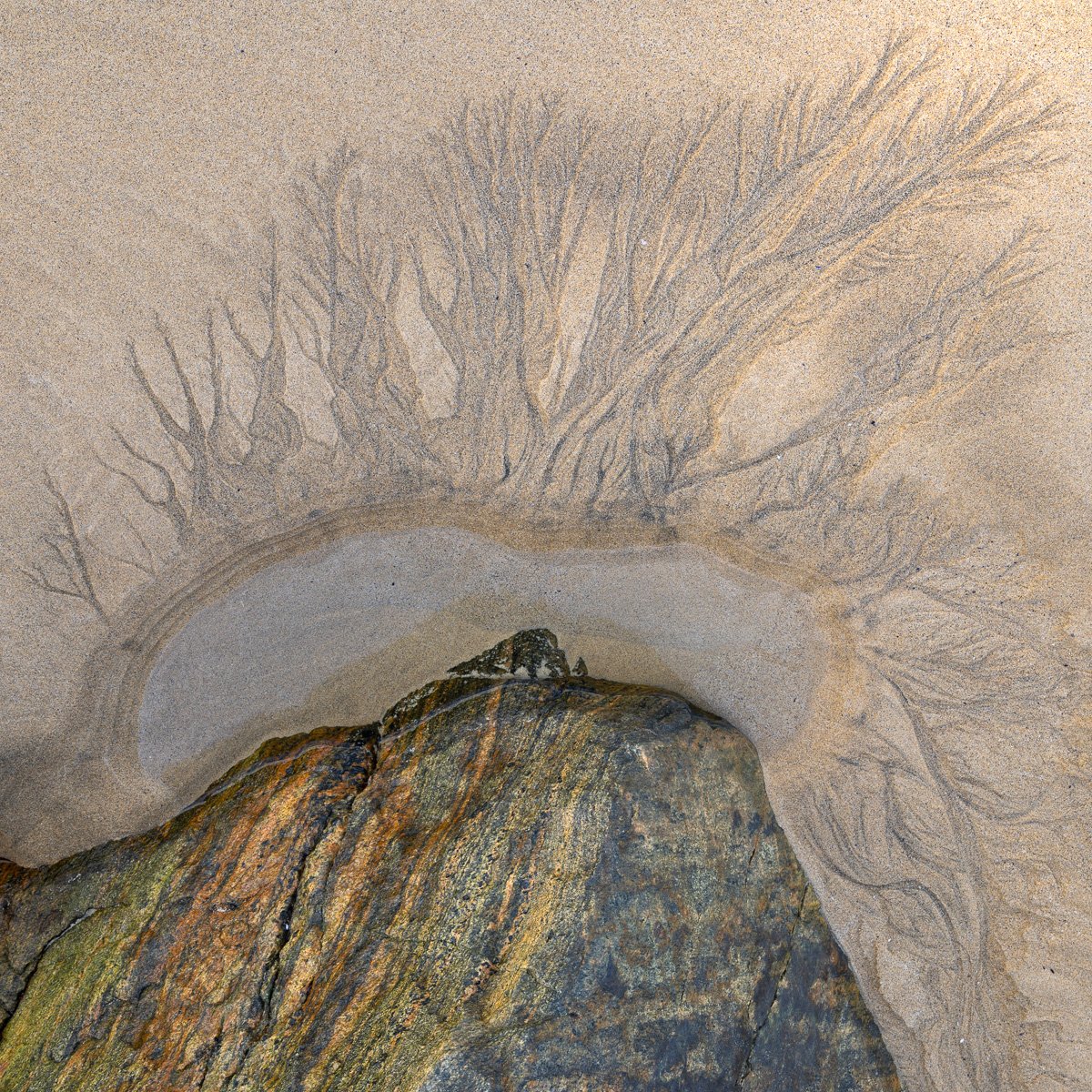The shutter is a fundamental tool of photography. The shutter opens to let the light in. How fast or slow will the shutter close to tell the story? On a busy, active oceanfront, the choices and decisions are many. How can you convey in a single frame the surges of waves at high tide, together with fierce winds, crashing against the high cliffs and weathered boulders?
Uig Bay, Isle of Lewis, Scotland
Scotland, like much of the north Atlantic, was a Viking settlement through most of the 8th through 15th centuries. Two weeks ago, I posted an image of the Reynisdrangar in Iceland which are next to the village of Vik. Vik is the Norse word for bay, and is translated in Gaelic as Uig. In the early 19th century, on a sandy shore near these Uig cliffs, someone found a buried Viking treasure which are today called the Lewis Chessmen. The ivory-carved chess pieces offer incredibly detailed insights into the Viking society. The sea seems to remember the Viking ships that sailed this shore, which in the span of the ages of these rocks, was an instant ago. You might even spot the fulmar flying through the waves.
Uig Bay, Isle of Lewis
The shore of the Outer Hebrides expose some of the oldest rocks on the planet. Lewisian Gneiss is 3 billion years old! The waves that crash against them last a few seconds.
Garry Beach, Isle of Lewis
We believe what our eyes perceive is “the truth.” But we see only a fraction of the light spectrum that other creatures can. What does a peregrine falcon perceive as it dives toward prey at 240 miles an hour, or a sloth as it climbs in the jungle forest? Lichens may live for thousands of years. How might they sense the high tide waves that spray them twice a day?
Isle of Harris
And if a lichen that lives multiples of times longer than we do can perceive waves in some way, how might the rock for which the life of a lichen on it might be for a small fraction of its existence?
When the high tide recedes, it leaves behind patterns in the sand that, at the longest, will exist only until the high tide returns.
Bosta Beach, Isle of Lewis
The sea covered this boulder. An hour or so before, the tide receded and left behind fractals or ferns or tree branches to embrace the rock for a few hours before disappearing. And my camera opened for a fraction of second to capture the light they reflected.
Tolsta Beach, Isle of Lewis






